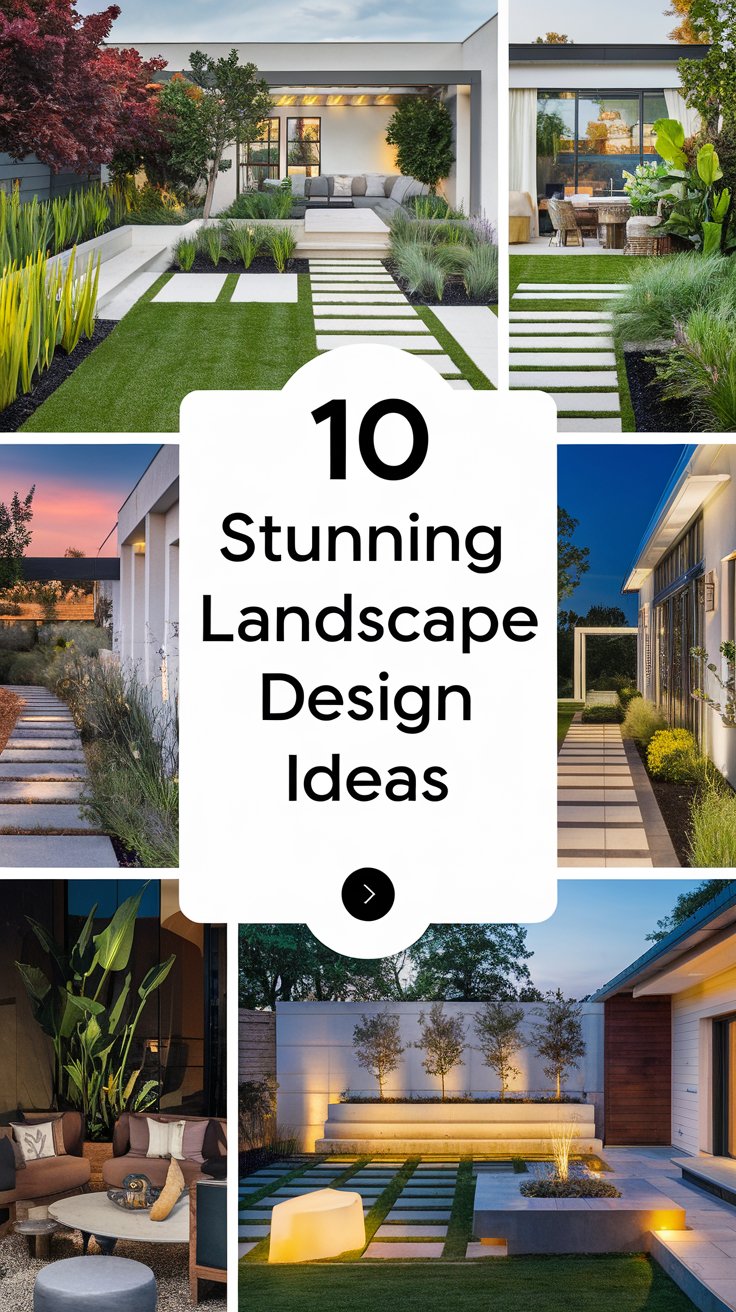Transform your outdoor space into a breathtaking retreat with these 10 landscape design ideas. Whether you’re looking for tranquility, functionality, or a touch of luxury, these design tips will help you craft a garden that’s both beautiful and practical. Explore various elements, from vibrant plantings to architectural features, and turn your backyard into the perfect haven.
1. Incorporate a Water Feature for a Stunning Focal Point
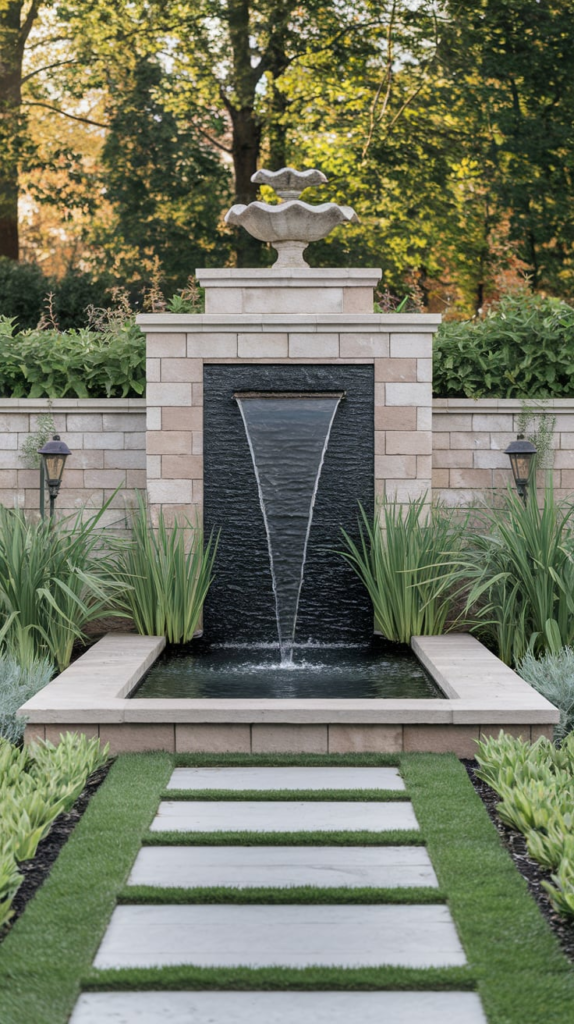
A water feature, whether a fountain, pond, or waterfall, serves as an eye-catching centerpiece in any garden. The presence of water adds a sense of tranquility, enhancing the overall atmosphere with its calming sounds and aesthetic beauty. It also helps to integrate different elements of the landscape, making your outdoor area feel more cohesive.
Water features can be placed in various parts of the garden, creating a focal point that draws the eye. You can pair them with plants that thrive near water, such as aquatic plants or lush greenery, to further enhance the visual appeal.

How to Do It
- Choose the type of water feature that suits your space, whether a small tabletop fountain or a large cascading waterfall.
- Select a location that allows the feature to be the focal point of your garden.
- Add surrounding plants that complement the water feature and help blend it into the landscape.
2. Play with Layers of Plantings for Depth and Interest

Adding layers of plants creates visual depth and interest, allowing you to combine various textures, heights, and colors. This technique adds a sense of movement and vibrancy to the garden, making it feel more dynamic and alive. By strategically placing plants at different levels, you can create a multi-dimensional look that evolves over time.
Mixing tall trees with smaller shrubs, perennials, and ground covers will not only give your garden a structured look but will also make it more inviting, regardless of the season.
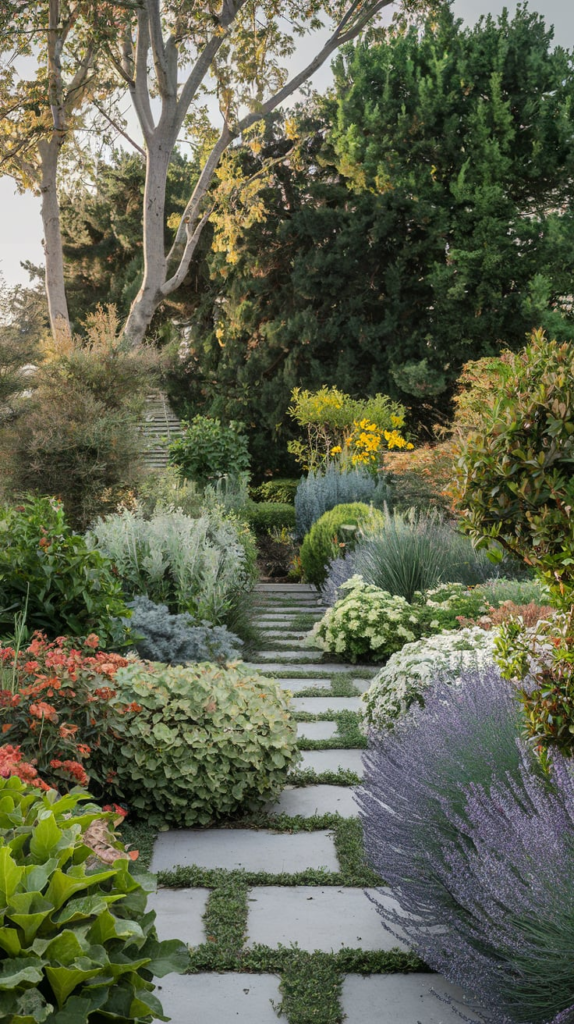
How to Do It
- Choose plants of varying heights and textures to create a layered effect.
- Place taller plants at the back and shorter ones in the front to ensure every layer is visible.
- Use ground covers or low-growing plants to fill in the spaces and add contrast.
3. Use Lighting to Enhance Your Landscape
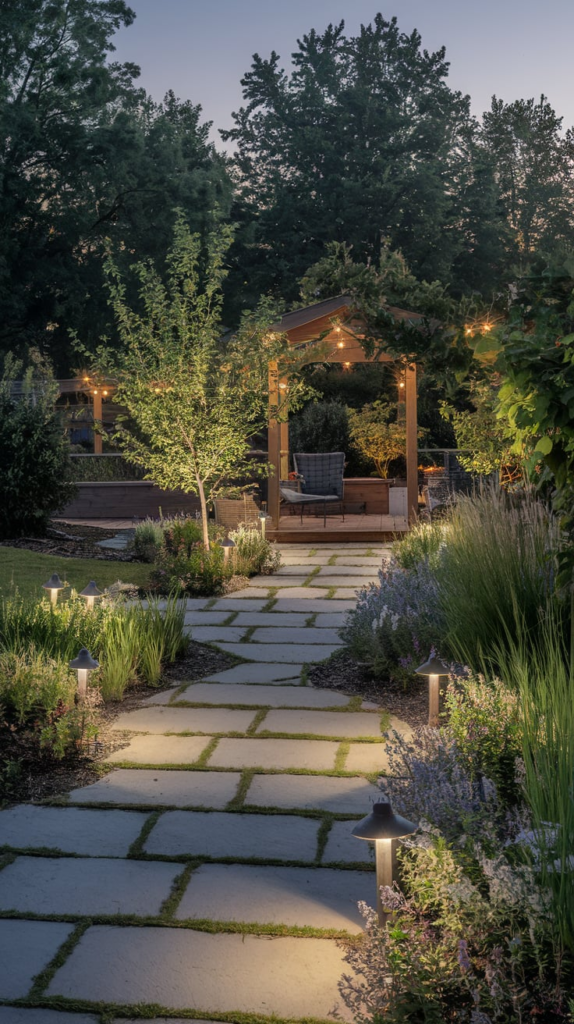
Outdoor lighting can completely transform the mood of your garden, making it inviting and functional even after the sun sets. Strategically placed lights highlight key features such as pathways, trees, or sculptures, adding a magical touch to the atmosphere. Lighting also improves safety and extends the usability of your outdoor space.
From soft ambient lighting to spotlighting, the right combination will enhance the beauty of your garden and create a warm, welcoming environment.

How to Do It
- Install path lights to guide the way along walkways or near steps.
- Use spotlights to highlight trees, sculptures, or water features.
- Consider string lights or lanterns for a cozy, intimate atmosphere.
4. Create a Private Retreat with a Pergola

A pergola is an architectural element that provides shade and structure to your garden while creating a secluded space for relaxation. Whether it’s paired with climbing plants like ivy or left open to the sky, a pergola offers both beauty and functionality, making it an excellent choice for an outdoor retreat.
This feature can also serve as a great space for outdoor dining, reading, or enjoying the sunset in peace.

How to Do It
- Choose a location in your garden that provides both privacy and a pleasant view.
- Install climbing plants like wisteria or roses to add greenery and beauty to the pergola.
- Furnish the area with comfortable seating to create a cozy, relaxing spot.
5. Add a Fire Pit for Cozy Evenings

A fire pit is a great addition to any garden, offering warmth and ambiance for evening gatherings. The crackling fire creates a cozy atmosphere, making it an ideal spot for entertaining guests or simply relaxing with family. It can also serve as a visual focal point in your landscape.
Fire pits can be built using various materials, from stone to metal, and can range from simple designs to more elaborate, custom-built structures.

How to Do It
- Choose a location that is safe and spacious enough for a fire pit, away from flammable materials.
- Select materials that match your landscape style, such as natural stone, brick, or metal.
- Add seating around the fire pit to encourage socializing and comfort.
6. Design a Custom Waterfall for Visual Drama
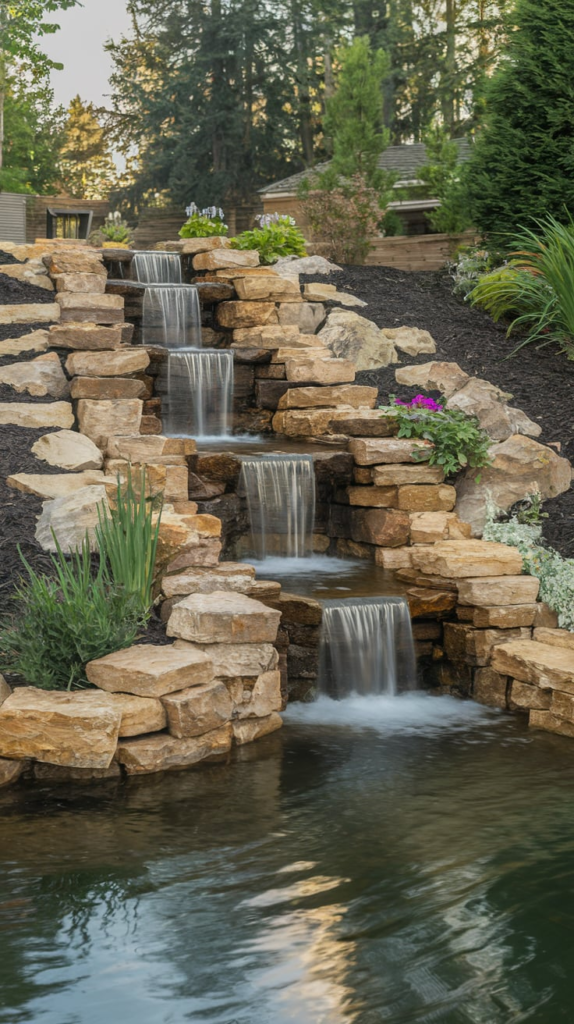
A custom waterfall can add a dynamic and soothing element to any garden. The cascading water creates both visual interest and a peaceful atmosphere. Waterfalls are perfect for large or small spaces and can be integrated with rock features or plantings to blend naturally into the landscape. Whether built into a hillside or placed next to a pond, a waterfall adds a touch of elegance and tranquility.
The sound of the water cascading down rocks can mask noise from nearby roads or neighbors, making it an ideal feature for creating a peaceful sanctuary.
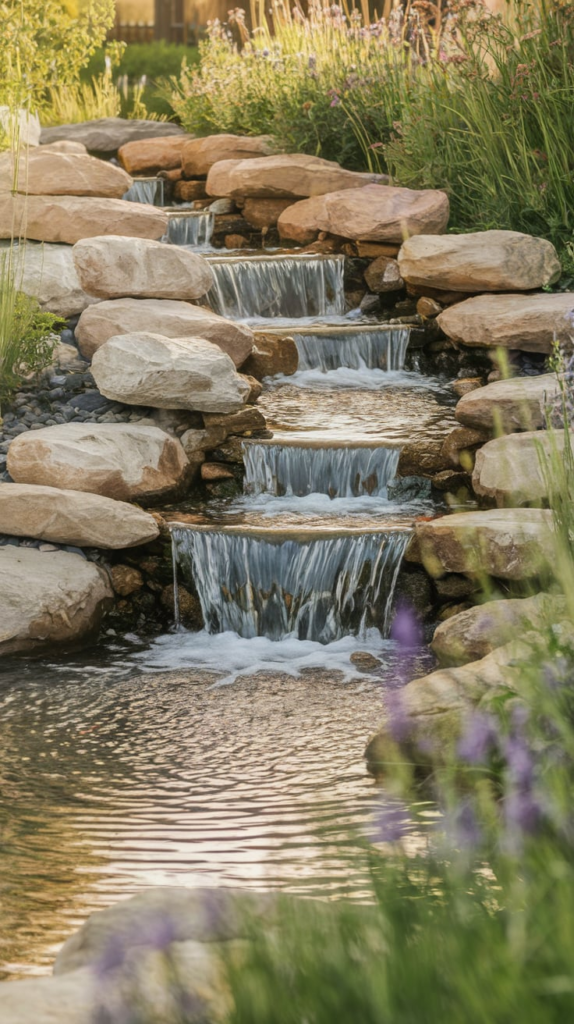
How to Do It
- Plan your waterfall’s location carefully, ensuring it’s positioned where water can flow freely and create the desired visual impact.
- Use natural stone or boulders to construct the waterfall, which will blend seamlessly with the rest of the landscape.
- Add plants around the waterfall to create a more natural, integrated look.
7. Plant Trees and Shrubs for Year-Round Beauty

A mix of trees and shrubs can bring year-round charm to your landscape. Trees offer shade and structure, while shrubs provide color and texture. Incorporating both evergreen and deciduous varieties ensures that your garden looks appealing in every season. In addition to their visual appeal, trees can also provide privacy, windbreaks, and shelter for wildlife.
By thoughtfully selecting plants that bloom at different times of the year, you can create a constantly changing, vibrant garden.
How to Do It
- Choose a variety of trees and shrubs that offer interest throughout the year—evergreens for winter, flowering varieties for spring and summer, and deciduous plants for fall color.
- Space plants strategically to create natural clusters, allowing them to grow into each other and fill the landscape.
- Consider the mature size of trees and shrubs to avoid overcrowding as they grow.
8. Incorporate a Fountain for Elegance
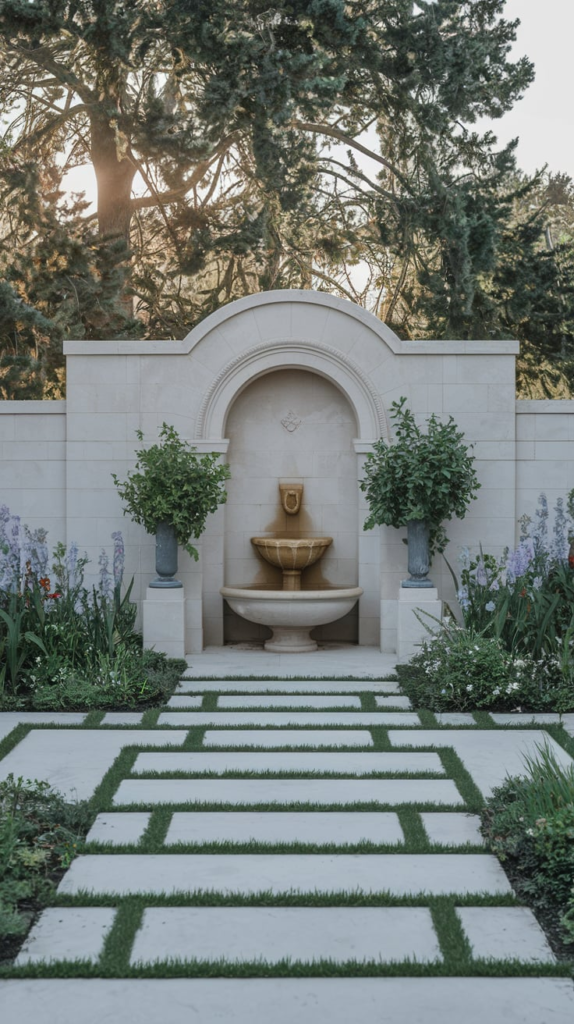
A fountain adds a sophisticated touch to any landscape design, serving as both a visual focal point and a soothing sound element. Whether you opt for a classic stone fountain or a modern, minimalist design, the flowing water creates a sense of tranquility while enhancing the overall aesthetic. It also integrates seamlessly with other landscape features like flowers, shrubs, and pathways.
Fountains can be placed in gardens, on patios, or as a centerpiece in a courtyard, providing a serene, elegant atmosphere wherever they are located.
How to Do It
- Choose the style of fountain that best complements your garden’s design—traditional, modern, or something in between.
- Place the fountain in a central location where it can be admired and heard from various points in your outdoor space.
- Surround the fountain with plants, stones, or sculptures that enhance its beauty and integrate it into the landscape.
9. Design a Tranquil Zen Garden

A Zen garden offers a peaceful and minimalist space that encourages relaxation and mindfulness. With its simple design of rocks, sand, and sparse plantings, a Zen garden provides a meditative retreat in the comfort of your own garden. This style of landscaping emphasizes simplicity, clean lines, and a serene atmosphere, making it ideal for those who seek a tranquil outdoor escape.
The soft patterns in the sand and carefully arranged rocks create a sense of balance and harmony, while low-maintenance plantings bring an additional layer of tranquility.
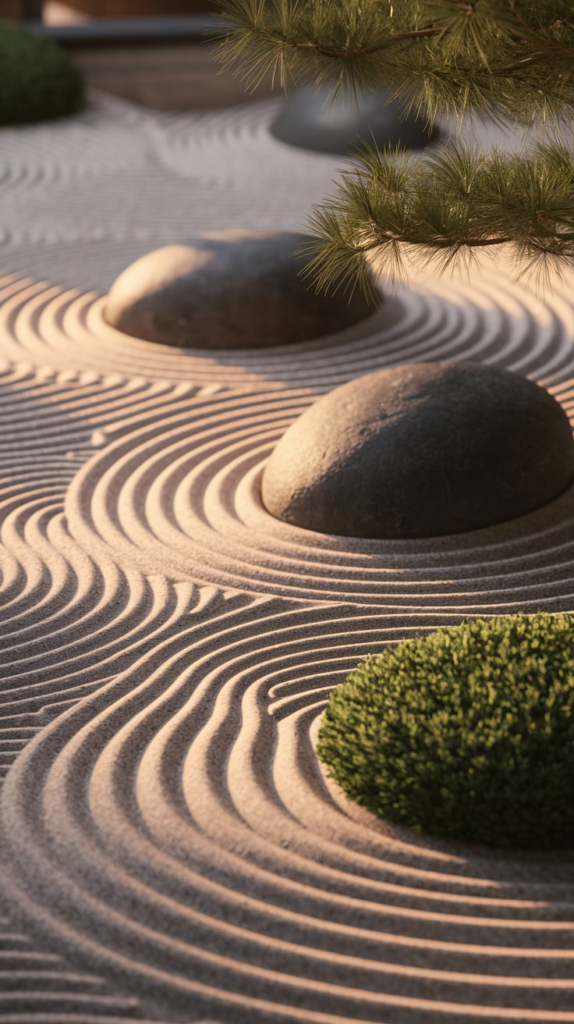
How to Do It
- Create a focal point in the garden, such as a large rock, bonsai tree, or stone lantern.
- Use fine gravel or sand to cover the ground, and rake the sand to form calming patterns.
- Limit plantings to a few carefully selected species, such as bamboo, moss, or ornamental grasses, to maintain the minimalist theme.
10. Use Natural Stone or Pavers for Walkways
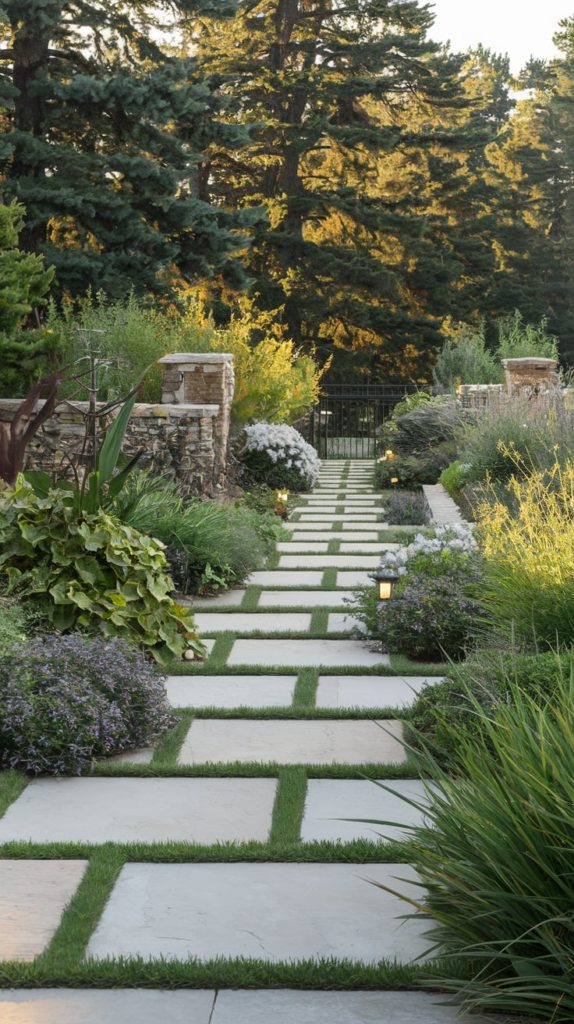
A well-designed walkway made from natural stone or pavers not only adds charm and structure to your garden but also serves a practical function. It guides visitors through the landscape while providing a visually appealing element that complements the surrounding plantings and features. Walkways made from these materials offer durability, easy maintenance, and a timeless aesthetic that blends seamlessly with any style of landscape.

Whether you’re creating a simple garden path or a more elaborate winding walkway, the use of natural materials adds a rustic, organic feel to your outdoor space.
How to Do It
- Choose pavers or stones that complement the color and style of your garden—light stones for a contemporary look or darker tones for a more traditional feel.
- Plan the shape and path of your walkway, considering the flow of traffic and the features you’d like to highlight.
- Ensure the stones or pavers are properly spaced and secured to create a stable, even surface that is easy to walk on.
